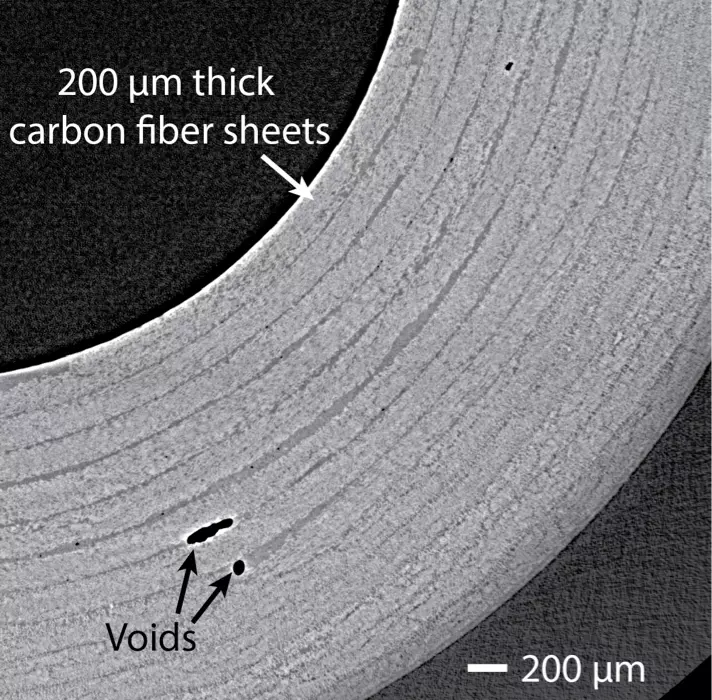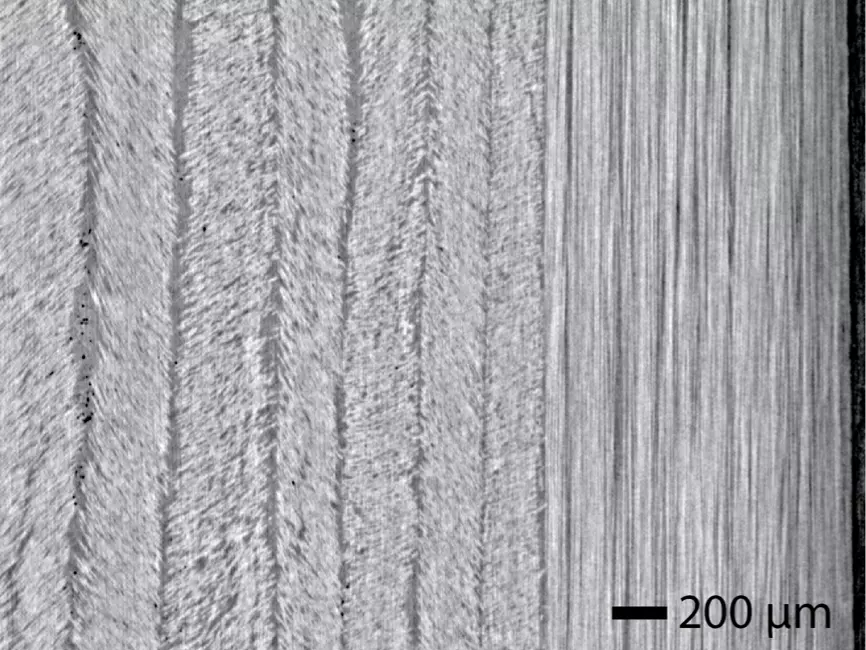Applications
Low-absorption materials encompass a wide swath of materials science, highlighting a variety of sectors where the Exciscope Polaris can improve contrast and image quality. These applications include: polymers, composites, and other carbon-based materials like carbon fiber as well as the growing field of additive manufacturing using these materials. This enables non-destructive testing with high detail of materials used for lightweight constructions. In this example, we have imaged the interior microstructures in the carbon-fiber composite shaft of a golf club. The images show clearly the material design, fiber orientations and internal voids.

Axial slice of the golf shaft depicting the construction from carbon fiber sheets and internal voids in the material.

Tangential slice of the golf shaft shows the different fiber orientations in the sheets.
Many of today’s products are composites of a variety of different material components. One example is a wireless ear pod where polymers, semiconductors, and metals all play a key role in its operation. Though the Exciscope Polaris specializes in imaging low-z materials, the system is versatile enough to image these complicated products with metallic components.
Combined 2D projection images of an ear pod
Products & Services
Contact
William Twengström
X-ray Scientist
william.twengstrom@excillum.com
+46 76 022 36 15